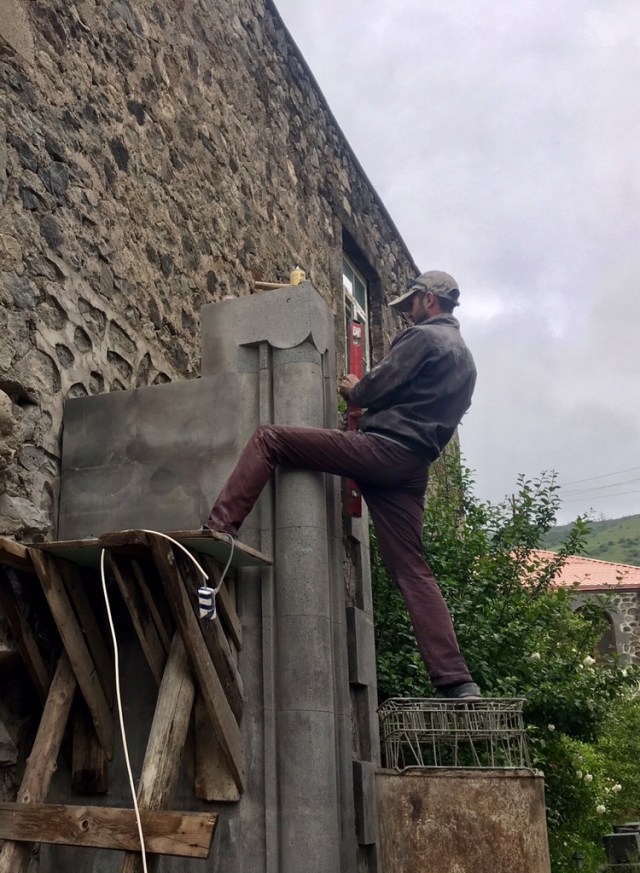In a week filled with sweeping landscapes, big names and history lessons spanning 6 millennia, it is the tiny details that stay special.
At Karahunj, Armenia’s stone henge I mooched among the wildflowers and was blanketed by the birdsong that rises from the grasses. Hidden from sight, the marsh birds and their cricket accompanists provide a soundtrack for visitors to the stones. The mountains, the rocks and the music make it one of the most lovely places on earth.
Most of the wildflowers were familiar– vetches, bird’s foot trefoil and a stitchwort or two. Then, disguised as rubble, a revelation: Iris lineolata grossheimii. This rare, dwarf iris is found only in this part of Armenia and relies on sepia contour lines and dark dots to hide its whereabouts. I am resisting the temptation to go back with a trowel and a plastic bag or two. No one would stop me if I did, for all of Armenia is there for the plundering. Stone carvings that survived the Mongols, the Persians and the Turks are today too often trundled away by locals planning an extension and seeking free building materials. The new Minister of Culture will have to introduce a few regulations, bylaws, ticket offices and site superintendents if Armenia’s open-air attractions are to remain intact.


The new government might want to turn its attention to health and safety regulation too. Outside a small hotel in Goris a stone sculptor plied his trade chiseling and chipping at a gateway from a perilous position on top of piled crates.

Some kilometers North, Russian soldiers took a day off from guarding the border with Turkey and took snaps with Ararat in the background. They were very jolly but perhaps not quite as buff and bemuscled as the Turks might fear.

At the Selim Pass we followed the tracks of long-ago merchants carrying jewels and spices from Iran and the Stans to buyers in Europe. This is Armenia’s Silk Road route and a caravanserai complete with stabling space for horses and camels still stands. The pass is only passable late spring to early fall. It was easy to imagine the animal warmth was welcome as tradesmen slept against bundled carpets and rolls of silk, safe from the rain, snow and wind.





The road along Lake Sevan, one of the highest altitude lakes in the world is lined with men selling fish, caught legally by rod or illegally in nets. The men hold their hands apart to indicate the size of the fish they have on offer. It is boring work and utterly unconvincing. Young men in hoodies use their full arm span to indicate a catch the size of a shark. In a couple of places scarecrows with their hands fixed 18 inches apart are stand-in salesmen. We had fish barbecue for dinner. Our catch seemed to be between 8 and 10 inches long– an average length and an exceptional meal.




